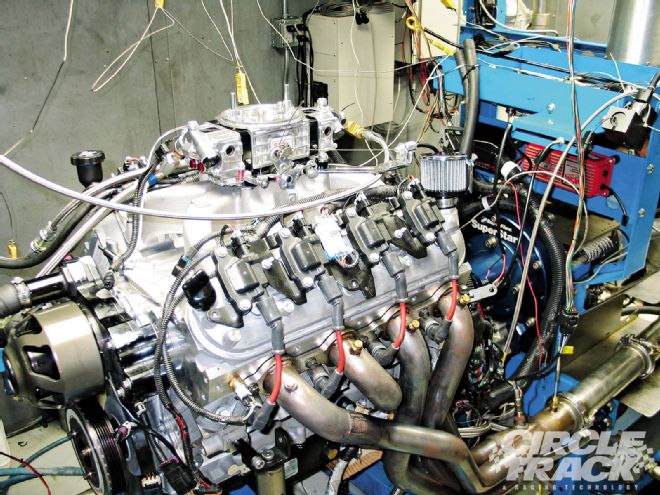
Editor's Note: In this second and concluding part of our investigation into coatings for circle track applications, we'll review a couple of pertinent points and then wrap our thoughts around some of the more grassroots applications we find today-along with some observations from an engine builder well known to this magazine's readership.
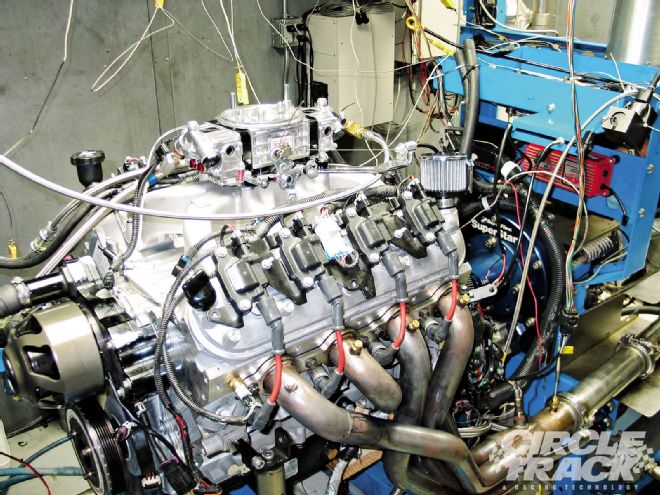 Nothing puts a coating through the paces better than a good long dyno session.
Nothing puts a coating through the paces better than a good long dyno session.
Recall we previously noted that early coating techniques and materials were actually a carry-over from research conducted in the aerospace industry, most significantly throughout the 1980s. Even though there are obviously conditions in outer space that dictate a different environment than earth-bound race cars, some similarities did exist, particularly with respect to temperature control and friction. From this beginning and because of the many perceived benefits from the coatings technology community, once the motorsports sector realized the potential of the process, coating materials and services directed to this opportunity rapidly evolved. Today, as mentioned in Part 1 of this story, the flow of technological advances began to move from racing back toward aerospace, quite the opposite from how it all began.
Tracy Trotter, president of Calico Coatings recalls, "My first exposure to coatings was in my go-kart racing days as a kid when we kept my car at A.J. Foyt's shop. He was exploring coatings back then and that's actually when I first started using them, mainly on the pistons in my kart engines. It may have been illegal to do at the time, but we did it anyway and it seemed to help. In fact, we had our best luck with coating bearings and pistons, not unlike today."
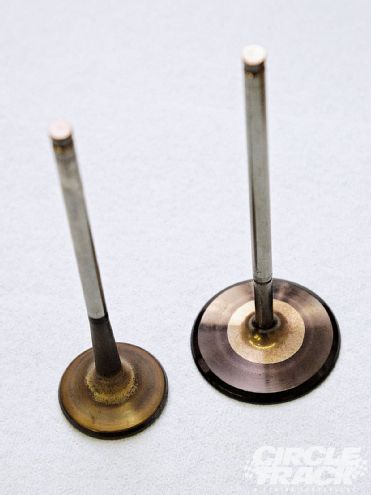 Both these valves have been coated with the Diamond-Like Coating (DLC) and have seen service in a racing application.
Both these valves have been coated with the Diamond-Like Coating (DLC) and have seen service in a racing application.
Actually, opinions can vary among engine builders about coating or not coating, particularly with regard to piston crowns and skirts. Early on, some of the plasma-applied materials (including aluminum and zirconium oxide) displayed an adhesion problem, sometimes losing the proper bond and causing related damage. And even today, opinions seem to vary. However, over time and with improved materials and applications processes, previously experienced problems are largely eliminated. But overall, requirements differ as do engine programs and parts combinations, where problems exist that could benefit from coatings and the extent to which cost becomes a deciding factor.
In fact, according to Trotter, "One of the biggest changes we've seen in recent years is that not every coating works in every program. Even the Cup teams have individual ways of doing things and it has become necessary to evaluate each situation and decide which coating best suits their needs. Of course, you need to consider that the design of certain parts and parent materials being used undergo constant change.
"For example, 15 or 20 years ago, we were coating valvesprings and it really helped. But today, we're finding that valvespring technology that includes spring material has improved to a point that coating doesn't seem to help. We still coat some of the older springs but seldom the high-end newer ones. It may be necessary to do in the future, but right now we're pretty much just working on improving the surface finish of the spring."
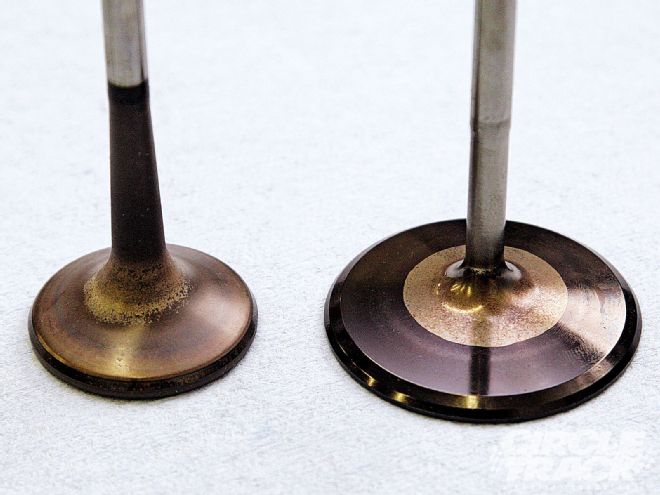 Note the condition of seats...
Note the condition of seats...
Another decision-making factor that comes into play is whether the objective to coating a part is to address durability or horsepower. With regard to increasing horsepower, opinions also seem diverse in terms of how much can be gained by the use of coatings. The reality of this seems linked to how an engine is built and, certainly, how it is used. Quantifying gains is also a function of test method and accuracy. But the consensus opinion is that there are multiple areas on and in a race car where some form of coating will be beneficial, including power and parts longevity.
In Trotter's experience, particularly for the weekend racer, "I think the least expensive and easiest first step would be to coat the bearings. The reason is because they're easy to get to and you can even buy them pre-coated, including cam bearings. Cost-wise, if you're considering coating a set of rod, main, and cam bearings, you're probably looking at a total coating cost of about $100. A racer isn't going to see any additional horsepower from this but he'll easily triple the life of these bearings. Plus, it'll help crankshaft life and if there's a sudden oil starvation problem, he'll be less likely to damage the rods and crank."
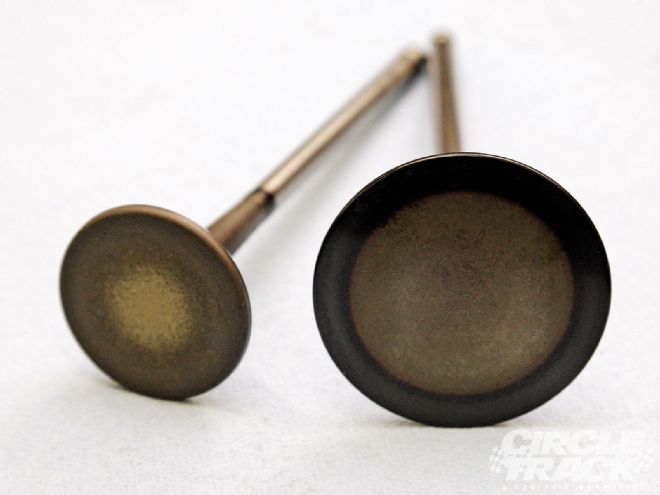 ...and lack of need for reconditioning.
...and lack of need for reconditioning.
Typically, in terms of engine parts, the next most popular components are the pistons. Once again, this operation is intended to extend cylinder wall wear through a reduction in friction, primarily as it relates to friction horsepower losses that net gains in torque at the crankshaft. Again, depending upon compression ratio, piston crown, and combustion chamber design, thermal barrier coatings on these surfaces may or may not be of significant benefit...but certainly can be in the proper environment.
On the immediate horizon, according to Trotter, "We're introducing a new finishing process called 'Super Micro Finishing' that is a combination of chemical and mechanical techniques intended to address post-machining surface imperfections." Actually, the process involved is designed to remove microscopic "peaks" or irregularities and residual stresses created on and in machined components where friction is a factor.
"Metal-to-metal contact creates friction that generates heat. The SMF treatment reduces friction and wear, increases part durability and improves corrosion resistance by removing a minimal amount of material, leaving an 'isotropic' or uniform surface finish of less than one micro-inch, in all directions," says Trotter.
Finally and fortunately, consistent with the growth and availability of technical services and information on the Internet, it's possible to communicate with the various coatings materials and service provider companies on a direct basis. Many have technical staff on hand to respond to user questions, in addition to discussing specific customer needs and recommendations. It can't be overemphasized that communicating with your chosen source of materials or services is often critical to getting the right solution to your particular application.
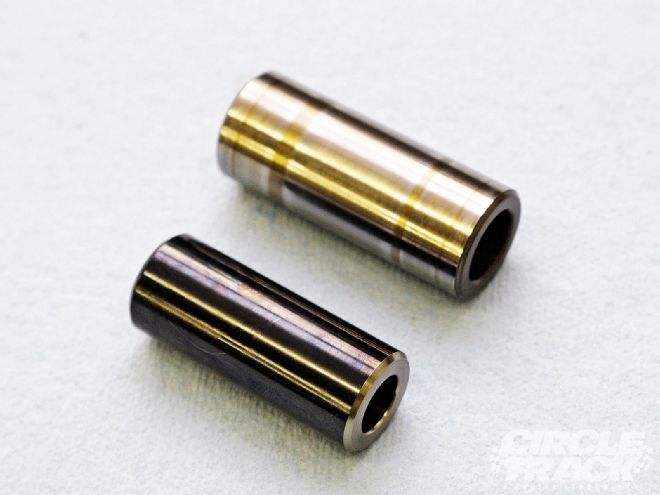 Even after lengthy use, the coated pin (upper of the two shown) appears in virtually unused condition, compared to the uncoated pin below. If you start with a good quality pin and apply the DLC coating, you can go through several re-builds and use the same pins. It's hard to tell they've been run, even though this is a steel-to-steel operating environment.
Even after lengthy use, the coated pin (upper of the two shown) appears in virtually unused condition, compared to the uncoated pin below. If you start with a good quality pin and apply the DLC coating, you can go through several re-builds and use the same pins. It's hard to tell they've been run, even though this is a steel-to-steel operating environment.
In these two stories, we've attempted to provide you with sufficient background information and experienced-based suggestions from multiple sources, including the comments that follow below from the highly-respected master engine builder Keith Dorton. From this menu of topics, we're hopeful you'll feel confident in exploring the world of racing and high performance coatings.
Taken From Experience
His 40-plus years of building and testing record-setting racing engines clearly qualify Keith Dorton as a voice of experience. His willingness to share some slices from that store of knowledge stands to benefit readers of this magazine. You may want to take notes.
Coatings have been around for decades. When did you first decide to use them in your work?
We've always had to look at things from a performance versus cost perspective. Of course, most of Circle Track's readers do this as well, so I think we're all pretty much on the same page. So this is how I first began looking at coatings, and I think it was sometime during the 1980s.
At the time, we were primarily doing what today are called Cup engines. I believe they called them Grand National engines back then. I knew some people who were getting into coatings and our first experience was with coated engine bearings. Coated bearings would essentially double the cost of these parts to my customers, and I wasn't yet convinced it was worth the investment. But I committed to give it a try.
So we had a particular Grand National engine customer who we'd done three fresh engines and he'd gone to Atlanta for a race. Unbeknownst to me, he failed the first engine during preliminary practice laps, basically warm-ups. On his second qualifying lap, he lost the next engine. I knew we'd run all his engines on the dyno before they left our shop, so something else was wrong. I told him there was likely a problem with his oiling system. In the end, it turned out he'd had his oil filter plumbed backwards.
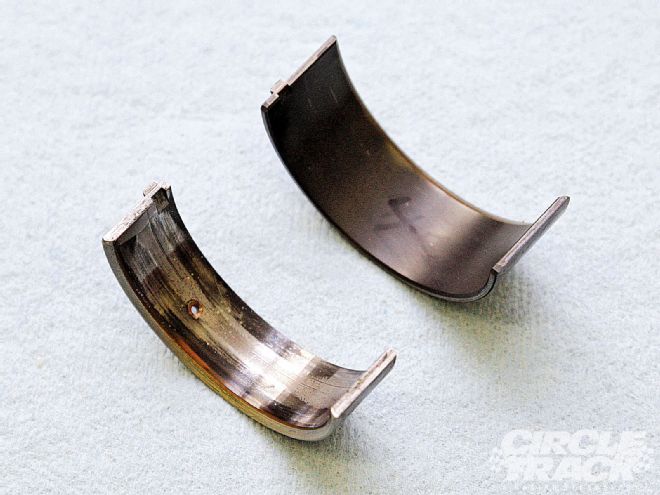 Both of these bearing inserts have seen service in a running engine. If you look closely, you'll note that the upper bearing (coated) has a black felt pin "X" mark on its bearing surface. This mark was placed there prior to when the bearing was installed and run. The bearing in the lower image was uncoated before its use.
Both of these bearing inserts have seen service in a running engine. If you look closely, you'll note that the upper bearing (coated) has a black felt pin "X" mark on its bearing surface. This mark was placed there prior to when the bearing was installed and run. The bearing in the lower image was uncoated before its use.
But here's my point. The first engine that only turned one lap had uncoated bearings. The second engine that got through warm-ups and was on its second qualifying lap had coated bearings. So I began thinking, there's definitely something to this that warranted more testing. The way I chose to do it was I'd put a coated and uncoated bearing on the same journal so that each journal was running a coated and uncoated part, side-by- side, and I set up all the journals like this throughout the engine. Then, when the engine was run through a full cycle, whether it was a specific number of laps or races, teardown showed the coated bearings did look better, in every case. In fact, in most instances, we were able to re-use the bearings. So that pretty well sold me and we've been using coating bearings since then, in the vast majority of cases. In all of our short track, Sportsman, and Late Model engines, we've found coated bearings to be a very beneficial step.
"Beyond this example, we've also found coated bearings to withstand some very severe operating temperatures. For example, we've had numerous cases where an engine was extremely over-heated. One of these got so hot it finally seized the pistons. The crank journals were gun-metal blue, but the bearings weren't hurt."
Do you prefer applying coatings yourself, because some are available at the retail level, or do you like to work with the coating companies?
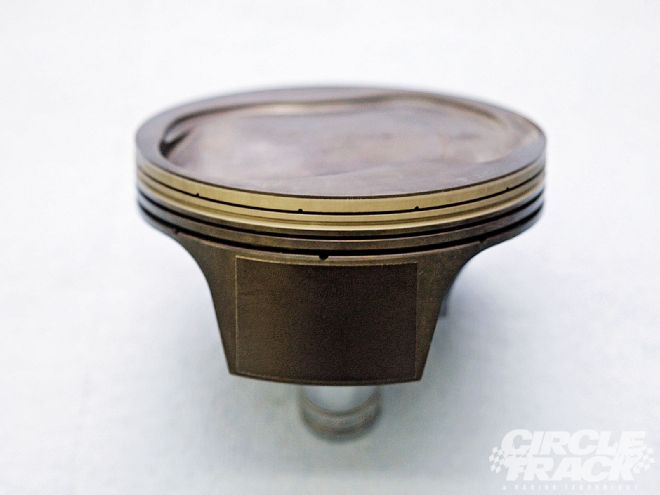 There are two areas of interest shown here on this Mahle piston. In this picture you can see that the skirt has a coated wear surface intended to reduction friction (decreasing friction horsepower loss). It's a phosphate coating base with a graphite-based coating applied over the phosphate. Engine builder Keith Dorton says that it has worked remarkably well for him.
There are two areas of interest shown here on this Mahle piston. In this picture you can see that the skirt has a coated wear surface intended to reduction friction (decreasing friction horsepower loss). It's a phosphate coating base with a graphite-based coating applied over the phosphate. Engine builder Keith Dorton says that it has worked remarkably well for him.
Actually, we work with the companies. In particular, we've worked for years with Calico Coatings and we've experimented with different types of coatings, especially engine bearings and the way we do that is like I described before, by staggering them throughout the engine (crankshaft), which I think is a quick way to get a fair and effective comparison between coatings as well as coating versus no coating.
Have you done any experimentation with coating other parts of your engines?
We've evaluated some of the friction-reducing coatings in areas like the crankshaft, connecting rods, oil pans, and those sorts of things that seemed to be popular in the earlier days of coatings. To me, the benefits weren't as cost-effective as I'd liked them to have been, but it seems to be more beneficial today.
We've also experimented a little with some of the thermal barrier coatings, like on headers, and haven't found many reasons to do this other than for corrosion resistance.
Neither have we seen many benefits from coating piston skirts except with the Mahle pistons. They use a phosphate coating and then apply a graphite-based coating over the phosphate. That has worked remarkably well for us. I guess one of the reasons we're continually on the lookout for ways to improve parts durability is because, so far, I haven't found anything I can't tear up, and it's nice to work with companies that are responsive to your needs.
Using ceramics on piston crowns and combustion chambers has been another area we've investigated. I'm sure there are certain types of engines and conditions that would possibly show improvement from coating these surfaces but so far we've not been able to justify the cost compared to the benefits.
Going back to the piston coating issue, we've begun using hard anodizing on the top ring groove, from the crown down to just below the ring land. This is to eliminate the "micro-welding" that occurs because we've dried up the cylinder so much from pulling a vacuum. This is just about a "must" when you're pulling 15 or more inches of vacuum. The hard anodizing seems like the only thing that has helped in this area.
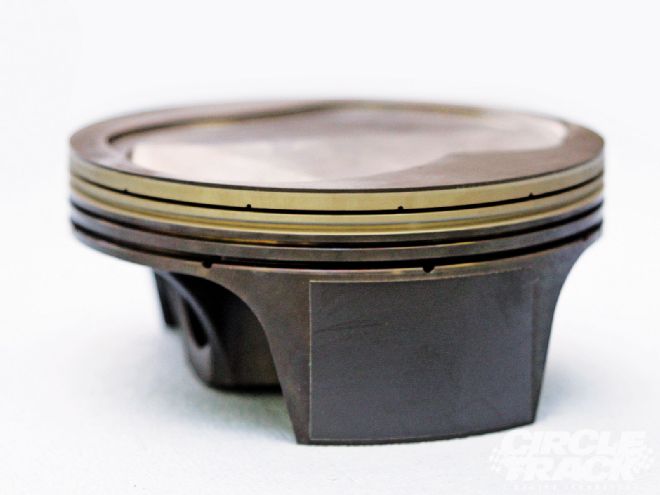 The crown down to the bottom of the top ring groove (just below the ring land) has been hard anodized. This eliminates the "micro-welding" that occurs because the cylinder dries up so much from pulling a vacuum.
The crown down to the bottom of the top ring groove (just below the ring land) has been hard anodized. This eliminates the "micro-welding" that occurs because the cylinder dries up so much from pulling a vacuum.
We've also seen a definite benefit from using the DLC (Diamond-Like Coatings) coatings on things like wristpins. For example, if you start with a good quality wristpin and apply the DLC coating, you can go through several rebuilds and use the same pins. It's hard to tell they've been run, even though this is a steel-to-steel operating environment. And even though the DLC coatings are a bit expensive, when you consider the long-term durability and cost savings in parts, we think it's worth the investment.
Also on titanium valves, we use the DLC coating on the valve heads. With a copper-beryllium seat, we've had remarkably good results from this combination. In fact, you can run thousands of laps, and where normally you'd be required to do a full valve job, it's not necessary when this coating is used. I guess when you're dealing with expensive parts to begin with, the cost of the DLC coatings makes considerable sense because of the extended parts life it provides.
I think this is going to become increasingly important as we see changes in fuel types being run today and in the future. Now that NASCAR is going to 15 percent ethanol (E15), we've done some experimenting with this and 85 percent ethanol (E85), finding out how to deal with the effects of these alternative fuels by the use of certain coatings.
It's probably worth mentioning that with the coming of alternative fuels that contain ethanol, we'll need to address the corrosion factor, especially in carburetors. In fact, we're doing work with Calico to build some carburetors for the ethanol-blended fuels. We're looking for some corrosion reduction improvements that go beyond what's possible with anodizing that's being used. In particular, we want to address the fuel passages that include the emulsion channels and similar areas. I mean, no matter how much you preach to racers, it's unlikely they'll go through all the post-race draining, cleaning, and lubricating of areas that are exposed to the ethanol-blended fuels. The ethanol will sit in there until the next Saturday night race and cause ongoing corrosion.
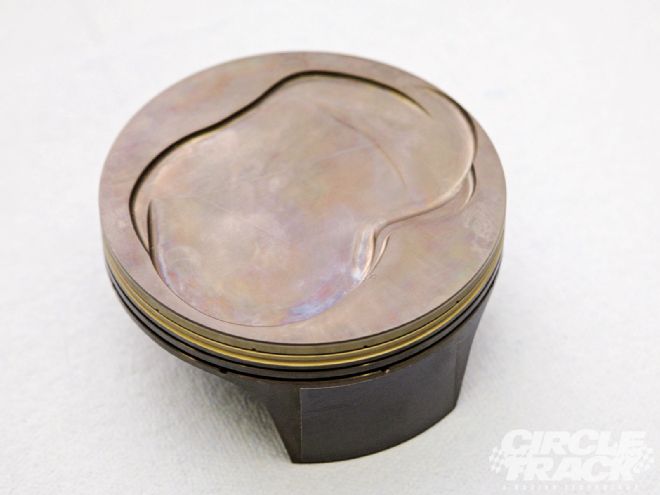 This is just about a "must" when you're pulling 15 or more inches of vacuum. Dorton has found that the hard anodizing seems like the only thing that has helped in this area.
This is just about a "must" when you're pulling 15 or more inches of vacuum. Dorton has found that the hard anodizing seems like the only thing that has helped in this area.
Have you seen any cost-to-benefit coatings and applications over the years you've been working with them?
Some of the less costly areas we've found especially beneficial include flat-tappet lifters. Years ago, I found that no matter what type of camshaft break-in lube you choose to use, if you coat the camshaft and lifters with a dry graphite film (DFL) in combination with the lube, it'll improve your chances of a proper cam break-in. I know camshaft break-in problems have been around for a long time, and we've found this approach to minimizing premature wear or improper break-in has been successful.
What do you see in the future for coatings?
I don't really know. However, I would never have believed the benefits that we see today, even seven or eight years ago. This is especially true with the DLC coatings that increase parts longevity so much. So I'm not certain where it'll all go from here, although there's a possibility that other areas in an engine may benefit more, like with crank journals and that sort of thing. The benefits we've seen from coating bearings, valve seats, and valve stems just further validates how coatings can help.
I do know that there is a considerable amount of very aggressive testing going on right now. Of course, a lot of these exploratory materials don't work at this stage, but testing is the only way to find out what does and what doesn't. I'm certain we'll see new coatings and applications in the future. It's an evolving technology.